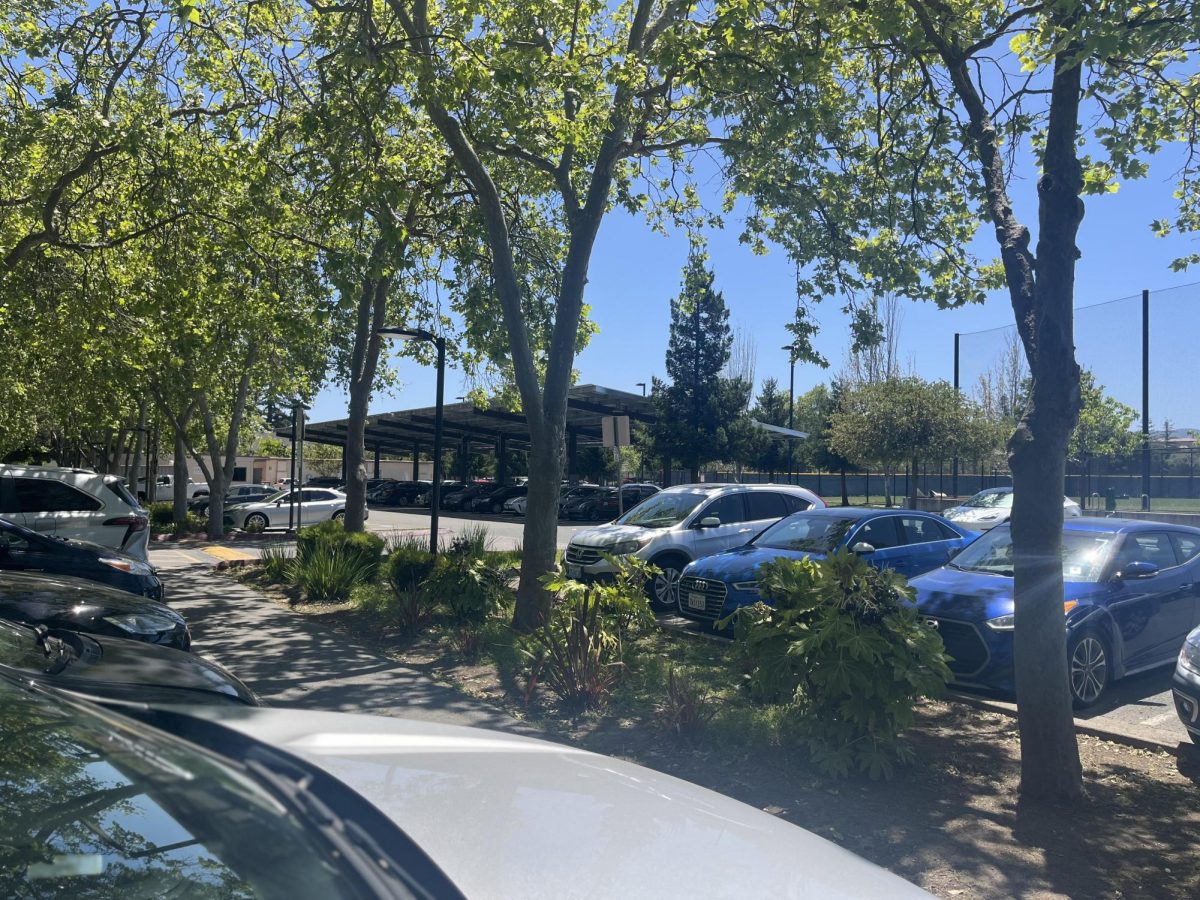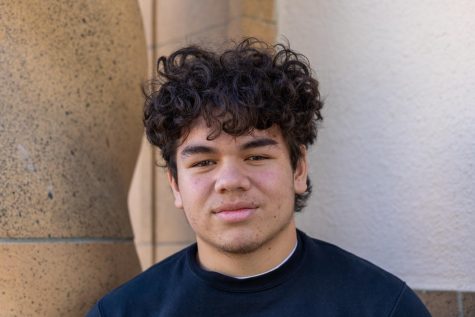As I walked to my car after a stressful day of classes, I felt a pit in my stomach when I noticed the tell-tale white slip tucked underneath my windshield wiper. I muttered a curse to myself, with a sigh. Parking ticket.
You would hope a medium-sized, suburban high school with approximately 2,000 students would have enough easy parking to accommodate student and staff drivers on a typical day. But that is not the case with the Palo Alto High School parking layout.
The front Embarcadero lot, just outside of the Performing Arts Center and the Haymarket Theater, has a good system going. The lot features two entrances and a dedicated section where staff can park. Many spots are spaciously diagonal, which makes parking easier than narrow perpendicular spots. Paly Assistant Principal of Operations Jerry Berkson said the Embarcadero lot has generally had plenty of space throughout the year.
However, during pick-up and drop-off, the flow can get temporarily jammed with the abundance of cars moving in and out. The biggest issue with this lot is that it can be a significant trek to class depending on your classroom location. And if you stay at school late, you might feel uneasy walking to your car in the large, dark empty lot at night.
Meanwhile, the Churchill parking lot that borders the Earl Hansen Viking Stadium has far more downsides. This lot has tight, perpendicular parking spots that were not designed for inexperienced teen drivers, and many minor accidents occur as a result. Bicyclists and pedestrians meander through the parking lot, often staring at their phones, making driving and parking even more challenging. In addition, the lot is consistently full from 9 a.m. on, and some evenings find the lot overflowing as well. Students coming to school often have to circle the lot, hoping for an empty space, and can be late to class and activities when they are forced to leave the full lot and find an alternate parking option.
Moreover, many of the student spots in the Churchill lot are in the prime fly-ball territory next to the baseball diamond, so errant baseballs could break a windshield or dent a car. Staff spots are more spacious and situated safely away from the baseball diamond.
With only one way to enter and exit the Churchill lot, the line to get in and out can back up quickly. Drivers who must turn left when exiting the lot sometimes have to risk their lives to dart across heavy cross traffic, with cyclists zipping by as well. With the Caltrain tracks adjacent to the school, there is regularly additional backup of cars when a train is coming through.
To make matters worse, Paly students must apply and pay for a parking permit, and there are not enough permits for every interested student driver. In an example of age inequity, students who are not old enough at the start of the school year to earn a driver’s license and secure a permit are disadvantaged, since most of the permits get distributed early in the school year. Students who get their license later in the school year are out of luck. Students who park without a permit risk getting expensive parking tickets, with fees going to the City of Palo Alto and not the school.
While there are some street parallel parking spots on the busy El Camino Real near Paly, the City does not allow parking between 4-6 p.m. Many students are not even finished with class or activities by 4 p.m., so they have to risk getting a ticket or getting towed.
While student enrollment is decreasing and therefore student parking demand might decrease, Berkson cautioned that on-campus parking could become more challenging.
“It is possible that the spots along El Camino may go away soon as the state is considering making that area a bike lane only,” said Berkson.
Currently, staff can park on campus in student or staff spots, and with fewer spots available due to Tower Building construction, staff have been parking in student spots. Once Tower Building construction is completed this summer, Assistant Principal Jerry Berkson expects 20-30 additional staff spots.
”What we will see is less staff parking in student available spots, creating more space for students,” Berkson said.
To promote safety and reduce tardiness, Paly should consider options for both increasing and enlarging student parking spots, as well as installing better parking lot lighting. One option could be asking government officials to remove the 4-6 p.m. parking restriction on El Camino, when many students need parking while they participate in Paly sports. Another option could be to allow more district staff to work from home, and then allocate a portion of the district office parking lot for students. A third option could be to allow parking during school hours on nearby streets off of Churchill.
Paly could also eliminate student parking permits and allow spots on a first-come, first-served basis. This would encourage students to arrive to school early. Alternatively, Churchill parking permits could be priced higher than Embarcadero permits to incentivize more students to park in the larger Embarcadero lot.
Finally, Paly administrators should meet with the City of Palo Alto to raise concerns about eliminating El Camino parking spots, and strategize about options for improving traffic safety and flow into and out of the Churchill lot. A traffic light or stop sign could improve safety for drivers, cyclists and pedestrians.
The Palo Alto Unified School District’s first focus area on its website is safety and emergency preparedness, stating a goal, “Create a physical environment that promotes student and staff safety through established protocols and procedures.” To achieve this goal, Paly should prioritize a parking improvement plan.



